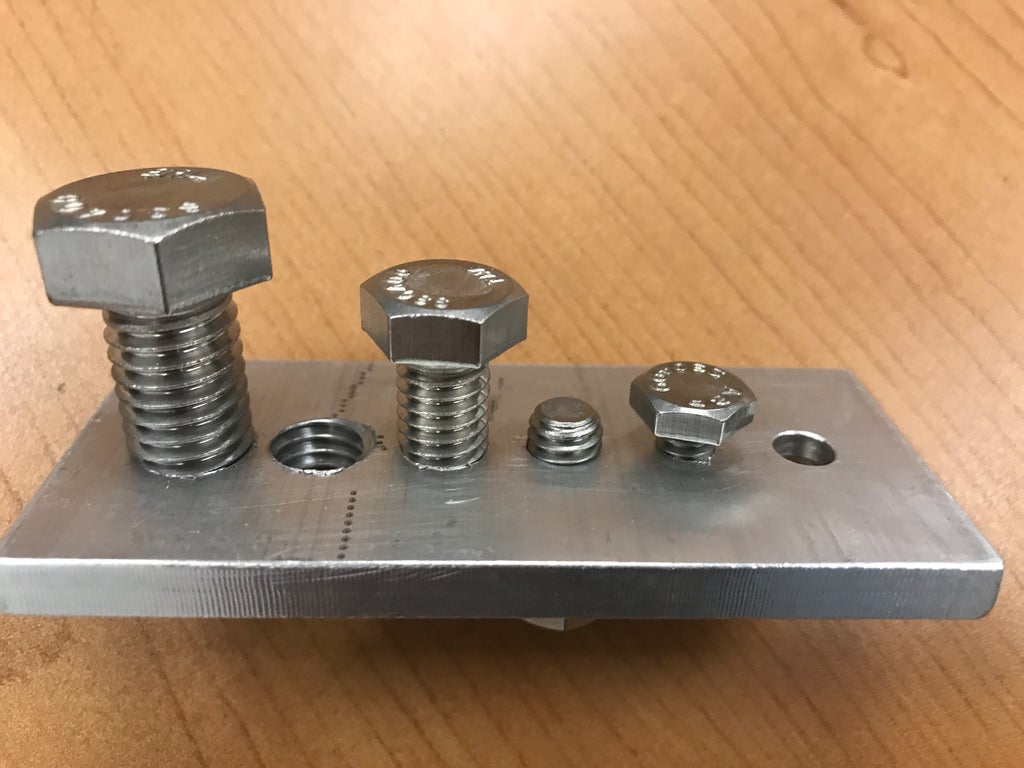When it comes to fastening materials together, using nuts and bolts is a common solution. However, there are instances where a nut and bolt cannot be used, such as when the material is too thin. This is where a tapped hole comes in handy.
A tapped hole is simply a threaded hole that allows a machine screw to be inserted directly into the material. Instead of having a separate nut and bolt, the screw threads directly into the material, creating a secure connection.
The process of creating a tapped hole is called tapping. This involves using a tap, which is a specialized tool designed to cut threads into the inside surface of a hole. There are various types of taps available to match different screw types, including metric and standard measurements.
To tap a hole, first, a pilot hole is drilled into the material. This hole is usually slightly smaller than the diameter of the screw being used. The tap is then inserted into the hole and turned using a tap wrench or other suitable tool. As the tap turns, it cuts threads into the material, creating a threaded hole.
Tapped holes are commonly used in metals, but can also be used in other materials such as plastic or wood. They are especially useful in thin materials where a nut and bolt cannot be used, as they provide a secure connection without the need for additional hardware.
When creating a tapped hole, it is important to use the correct tap size and thread type for the screw being used. It is also important to ensure that the tap is turned slowly and evenly to prevent the tap from breaking or damaging the threads.
A tapped hole is a threaded hole created by the process of tapping. It is a useful solution for fastening materials together in instances where a nut and bolt cannot be used. By using the correct tap size and thread type, and by turning the tap slowly and evenly, a secure and reliable connection can be created.
What Is Tapping In Drilling?
Tapping in drilling is a process of creating threads into the side of a pre-drilled hole. This process is used to create a secure connection between two materials. Tapping requires a specific tool called a tap, which is availabe in various sizes and shapes to match the screw type required. The tap is inserted into the hole and rotated with a wrench to create threads. Tapping is a common technique used in metalworking, woodworking, and other industries where a secure connection is required. It is essential to select the correct tap size and type to ensure a proper thread fit and avoid any damage to the material being tapped.

What Does A Tapped Hole Look Like?
A tapped hole appears like a regular hole, but it has internal threads cut into the surface. The threads in the hole allow for a machine screw to be screwed into the hole, creating a secure fastening. Usually, a tapped hole is larger in diameter than the screw thread size, and the depth of the hole varies depending on the application. Tapped holes can be recognized by the visible threads around the inside diameter of the hole. These threads are usually uniform in size and shape and can be identified with a visual inspection.
What Do You Call A Threaded Hole?
A threaded hole is commonly referred to as a tapped hole or screw hole. It is a hole that has been threaded, or had threads cut into it, to allow for a screw or bolt to be inserted and secured into place. In some cases, a threaded hole may also be referred to as a threaded bore or threaded opening. These types of holes are commonly found in a variety of objects and materials, including metal, plastic, and wood, and are used for a wide range of applications in industries such as manufacturing, construction, and engineering.
Does Tapped Mean Threaded?
Tapped and threaded are often used interchangeably to refer to a hole that has been threaded internally. Tapping is the process of cutting threads into the internal surface of a hole, creating a female thread that can accept a screw or bolt. Therefore, a tapped hole simply means that it has been threaded usng a tap, and can be used to securely fasten a screw or bolt. It is important to note that tapping requires precision and accuracy to ensure that the threads match the size and pitch of the screw or bolt being used, and that the hole is deep enough to provide sufficient engagement and grip.
Conclusion
A tapped hole is an essential feature of many metal structures where a nut and bolt cannot be used. It is a hole that has threads cut into the internal surface, allowing for screws to be inserted and tightened securely. The tapping process involves creating these internal threads, which can be achieved with a variety of taps to match different screw types and sizes. Whether you’re working in construction, manufacturing, or any other industry that requires metal fabrication, understanding how to create and use tapped holes is essential to achieving strong and reliable connections. By folowing the proper techniques and using the right tools, you can ensure that your tapped holes are precise, durable, and meet your specific needs.
